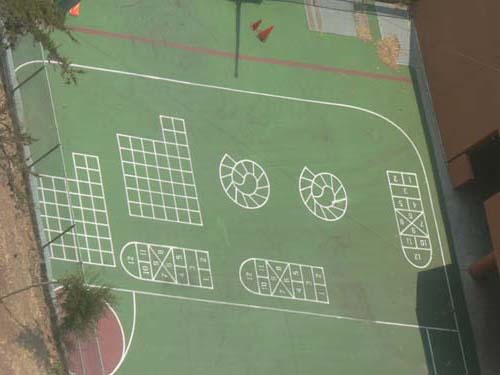
Schoolyard, San Francisco
The main research interests of the lab include:
Visually-Guided Action
Efficient, everyday movements such as grasping rely on vision to provide information about object properties and the position of the body in the world. This information is used both to plan movements, and to provide feedback during the movement, allowing fine adjustments to be made. We investigate how different sources of visual information (for example, binocular disparity, perspective) contribute to this process. To do this, we manipulate the information available from vision and measure the effects on movement trajectories, using
motion capture systems. Our particular emphasis is on using well-controlled experimental methods from psychophysical studies of depth perception in the study of visually-guided movement.
Sensory Integration
When estimating the properties of the environment, the brain processes multiple sources of information, both across the different senses, and within a sensory modality such as vision (e.g. binocular disparity, perspective etc.). We investigate how information is combined from multiple sources to give a single percept of the world. Our particular emphasis is on how the brain combines information from vision and haptics (active touch) when using tools. This research aims to better understand the fundamental human capability to use tools, as well as examining the flexibility of sensory integration processes more generally. By better understanding human tool-use, we hope ultimately to inform the design of visual-haptic interfaces such as remote surgical devices.
3D visualisation and Virtual Reality
3D visualisation and Virtual Reality (VR) systems play an increasingly important and varied role in society, that includes entertainment, scientific applications, simulators/training, and medical imaging. There have been great strides in this technology in recent years, but some fundamental problems remain. In particular, perceived space commonly appears distorted in VR systems, and using them can result in fatigue and discomfort. We carry out both applied and basic research in this area. By investigating the causes of these problems, we hope to aid the development of improved systems in the future. Also, since the majority of our research makes use of 3D visualisation techniques and equipment,
developing new systems allows us to explore basic scientific questions in vision. This includes studies of depth perception, eye movements, and of the eyes' focusing response.

